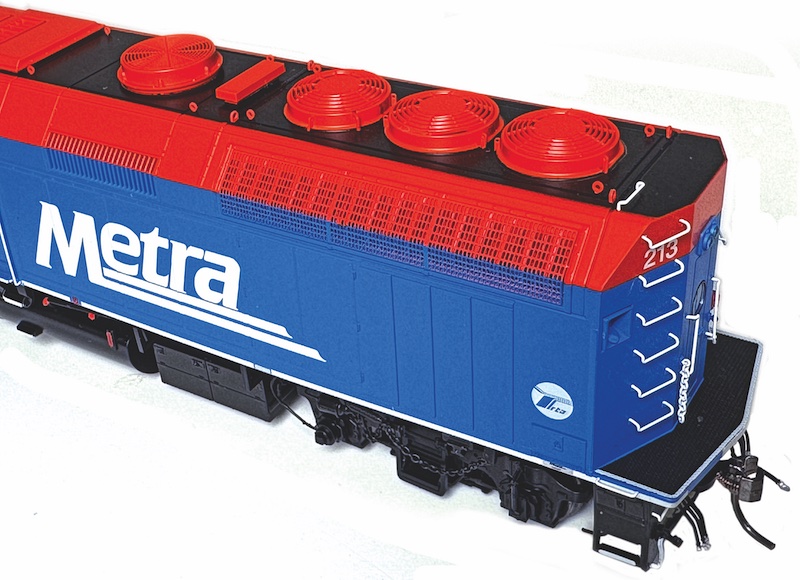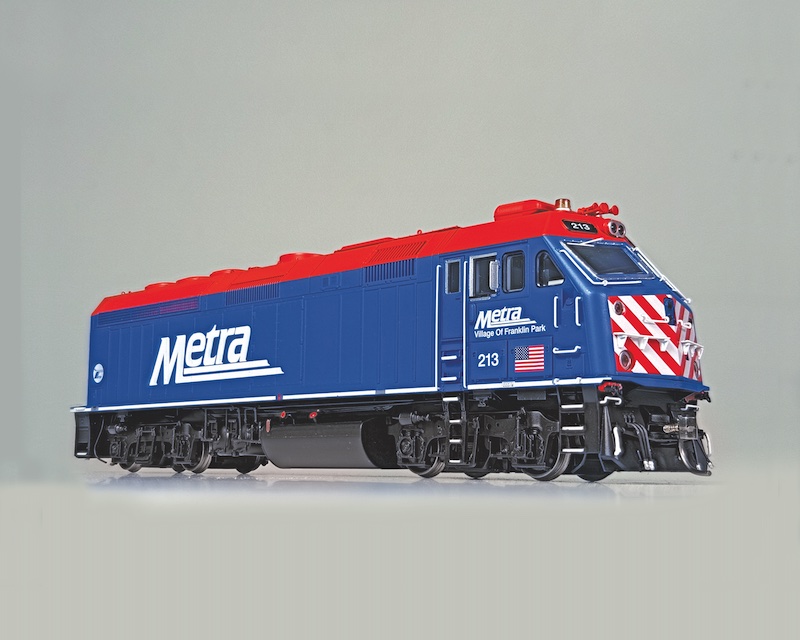 With 243 stations, eleven different routes and over 500 route miles, Chicago’s Metra operates the fourth largest commuter rail network in the United States. With only one route fully electrified, the majority of Metra’s rail network is propelled by a fleet of diesel-electric locomotives based on EMD technology. With 115 units on the roster by 1992, the EMD F40PH series of locomotives formed the overwhelming majority of the Metra diesel fleet. 85 of these utilized the standard F40PH carbody with a short low nose at the front. However, with the introduction of a new cab first seen in 1989 on Amtrak’s two experimental F69PH-AC locomotives, change was in the air for Metra’s final group of F40s with the release of the F40PHM-2.
With 243 stations, eleven different routes and over 500 route miles, Chicago’s Metra operates the fourth largest commuter rail network in the United States. With only one route fully electrified, the majority of Metra’s rail network is propelled by a fleet of diesel-electric locomotives based on EMD technology. With 115 units on the roster by 1992, the EMD F40PH series of locomotives formed the overwhelming majority of the Metra diesel fleet. 85 of these utilized the standard F40PH carbody with a short low nose at the front. However, with the introduction of a new cab first seen in 1989 on Amtrak’s two experimental F69PH-AC locomotives, change was in the air for Metra’s final group of F40s with the release of the F40PHM-2.
Our sample for this review is Rapido’s highly detailed rendition of Metra 213, an EMD F40PHM-2 finished in the carrier’s bright blue paint scheme. Never before available as a mass-produced ready-to-run model in any scale until now, Rapido’s latest offering replicates one of thirty F40PHM-2s built in 1991 for Metra with the new cab derived from the F69s. Derided at first for being the “E-unit killers” when they first entered service on the former Chicago, Burlington & Quincy “Racetrack” propelling bilevel commuter trains between Chicago and Aurora, Ill., this distinctive variant of the F40 family has finally earned its own fan following over the years.

Nicknamed “Winnebagos” for their cab and silhouette resembling the popular recreational vehicle, the F40PHM-2 fleet was sent off to Progress Rail beginning in 2016 to be rebuilt as F40PHM-3s after a quarter-century of reliable service. The upgraded locomotives returned with numerous enhancements resplendent in Metra’s current “fade” scheme. METX 211 was painted in tribute to Chicago, Burlington & Quincy in 2019, also offered by Rapido in this run. These unique locomotives continue to serve today not only on the former CB&Q lines, but also over the former Rock Island line to Joliet, and on SouthWest Service to Manhattan, Ill.
Each Rapido F40PHM-2 and F40PHM-3 comes bristling with detail, starting from the inside with a multi-color painted cab interior with seats and engineer’s desktop control stand visible through the large front windshield. The gauges on the desktop control stand illuminate when the sound is enabled.
On the outside are separately applied windshield wipers, vertical cab mirrors and arm rests. Nestled between the illuminated number boards is a dual-beam oscillating Gyralite, with one clear lens and one red lens, each lit and independently controlled under DCC…




